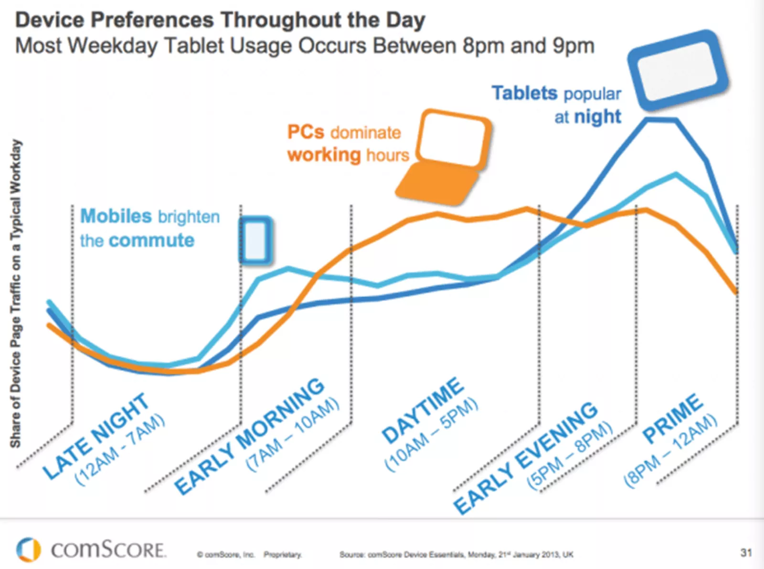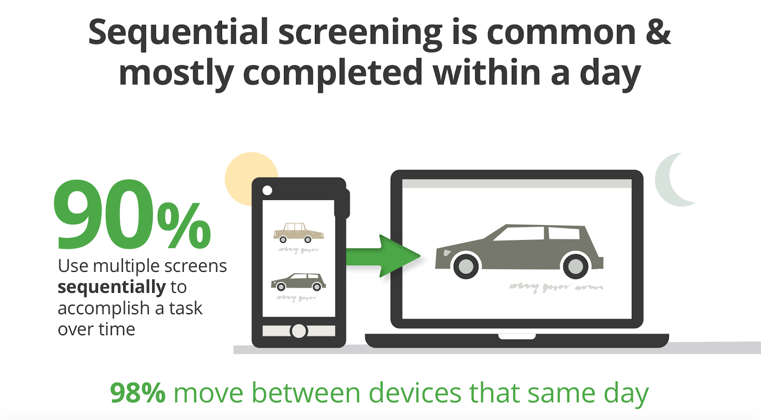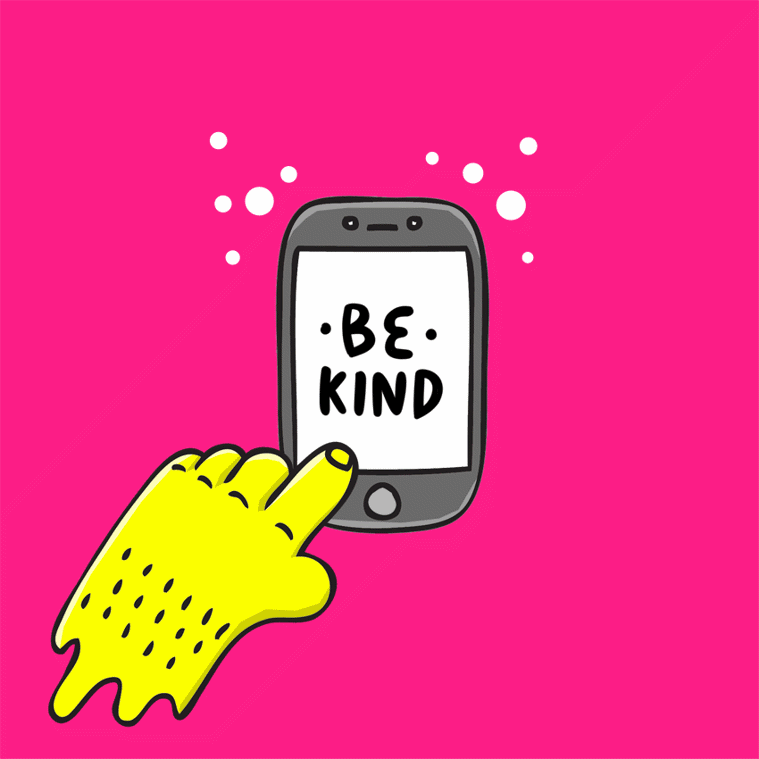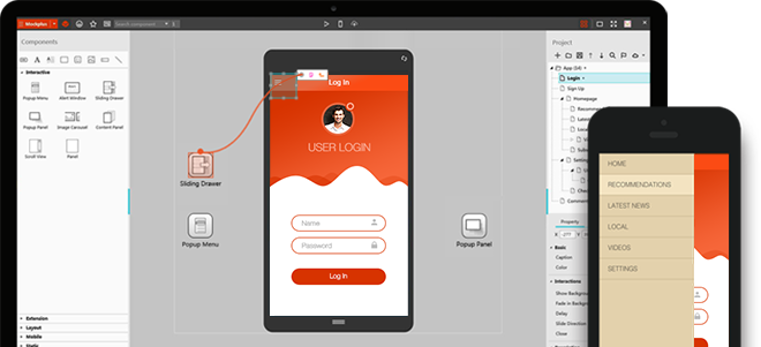
9 Common Mobile Experiences Myths might Affect Your App (2025 Edition)
You will surely agree with us that an app is completely a mobile solution. If this mobile app is executed correctly, your small business will see a significant increase in revenue and customer engagement. As a mobile developer, you have definitely have dream of create more and more best app and get them more downloaded by millions of users as well as more reviews on the app.
A report shows that, in 2019, about 5 billion cell phone users on the planet is required. This makes mobile an amazingly profitable mechanism for app designers. In the meantime, various myths still encompass mobile app development which keeps mobile teams from making excellent user experience.
Here we will discuss about 9 common mobile experiences myth.
1. Mobile users are always on the run
While thinking of mobile phone users, it's so much simple to make a stereotypical picture of a person who constantly rushed. It might be true for so many times. For instance, when we are going to your work and use our phones while waiting for the train. Sometimes it is inaccurate to expect that the greater part of associations with mobile applications occur in such conditions.
Google conducted a multi-screen word study showing that 60% of mobile phone usage takes place at home.In accordance with another study of mobile phone usage are from 6 p.m. till 10 p.m. So as opposed to considering mobile phone users as individuals hurrying to get the train with their cell phones, would it be a good idea for us to consider individuals who utilize portable applications generally at home? No. We ought to investigate our interested customers conduct to see how they like to connect with our applications and structure our items to fulfill the requirements.

2. Mobile apps are stand-alone experiences
It is said that mobile apps are isolated experiences and don’t need to be combined with other channels. Many developers believe it. Actually, mobile is simply part of a greater picture in which different kinds of gadgets (laptops, tablets, PCs, smartwatches, and so forth) are mediums through delivered the experience. Every clients ought to have the option to change an alternate medium and proceed with the journey.
According to Appticles, 37% of clients do look into on mobile phone however change to work area to finish purchase. In case you're designing an e-commerce app, mobile users should have the choice to change their laptop or desktop to proceed with the voyage.

With regards to making a client journey, a definitive objective is to make a consistent experience over all devices.
3. Native apps are better than hybrid apps
One of the first things app developers do even before starting app development is choosing what sort of the application they want to build; whether it will be a native or hybrid mobile app. These two differences are significant. The Native apps are designed specifically for the mobile platform (iOS or Android), while hybrid apps are web-based apps that basically web services that clients keep running in their browser. It is believed by so many developers that native apps are always better in terms of delivering optimal user experience. In reality, modern hybrid apps can show incredible execution, they permit making amazing portable applications. Hybrid apps don't require item group to invest additional time on making different app for every mobile platform.
So when it comes to choosing hybrid vs. native app, it’s significant to weigh pros and cons of both approaches and pick the one that better fits product strategy.
4. People don't scroll
While this experience myth is less well known today, still numerous product teams trust that they should put the most significant substance 'over the overlap.' in reality, the overlay doesn't exist any longer. Individuals do parchment and they do it normally. And when it's about mobile, mobile users scroll the online pages. Scrolling is second the most popular interaction after the taping.

5. Clients are constantly associated with the web
Items in developing markets must probably perform over moderate or discontinuous network. If you intend to structure for such market, ensure your item works when it isn't associated with the Internet by any means (permit reserving of information) and upgrade your item for quick stacking.
6. Prototyping is an additional progression in item improvement
For many product teams, it is possible to skip wire framing/prototyping phase and jump straight to coding. Mobile app development is a complex activity which requires focusing on different aspects of design - information architecture, interaction design, visual design, etc. If you think you can consider all possible item requirements without prototyping, that’s not possible. A real design is needed to play with it and to understand how it works. This occurs only when you focus on prototyping your solutions.

7. Mobile users need fewer features than computer users
It is clear that, this experience may be unique for the one we have on our computers. Designing for mobile has certain confinements, for the most part in light of screen land restrictions. Designers should work to decrease the complexity of interaction with a item and build a more focused experience by not removing some parts of the item. But it's not right to assume that mobile users need fewer features simply because they use utilize a product on mobile. The quantity of features relies upon the idea of your item. It's urgent to investigate client associations to make sense of what features our clients truly need.
8. The more the features you add to your app, the better it will be
If you think that more features means more value , it's actually your misconception. Putting too many features in your device not only increases the time-to-market, it additionally influences the client experience. It's difficult to convey a lot of intricacy without bargaining the client experience. It's conceivable to anticipate highlight creep by doing client investigate. Client research causes you to recognize clients wants and needs, and encourages you better organize feature demands.
9. Testing can be postponed until the market release
Last stage of every app is testing which is actually a time-consuming activity. It might be tempting to postpone it until the time when your app will be available for the real users. You should be careful to make no mistakes on your mobile app. It is not possible to test your products. So remind it in your mind every time. It will be your mistake if you think that clients will be glad to test your application and report all issues. First, clients will be disappointed by a negative experience, and this will expand skip rate. Second, it'll be difficult to modify a few pieces of your item since it'll require design and improvement effort. It's greatly improved to begin testing when you got a first intuitive model.
Don't let myths confuse you! When it comes to mobile, it’s essential to think about the overall user experience and design for your users.
Why Startups and Enterprises Trust Royex Technology for Mobile Apps Development
Building a mobile app is exciting, but it can also be overwhelming. Startups want to launch quickly and make an impact, while enterprises need solutions that can handle growth and complexity. That is why so many businesses turn to Royex Technology. We make the process simple, guiding you from the first idea to a polished, fully functional app. Our focus is always on creating apps that users love to use and that help your business grow.
What sets Royex Technology apart is our personal approach. We take the time to understand your goals, your audience, and your challenges. Then we design apps that are intuitive and engaging. Every screen, every button, and every interaction is carefully crafted to provide a smooth and enjoyable experience. Users should feel at ease while exploring your app, and that’s exactly what our team ensures.
As a trusted Mobile App Development Company in Dubai, we bring both creativity and technical expertise to every project. Startups benefit from our expertise in quickly turning concepts into real products. Enterprises rely on our experience to build scalable, secure, and high-performing apps. We follow the latest trends and tech so that each app we deliver is up-to-date, fast, and trustworthy.
Choosing Royex Technology means having a partner who is committed to your success. We do more than develop apps; we help you create solutions that engage users and deliver results. That is why startups and large enterprises alike trust Royex Technology for their mobile app development needs. With us, your app is not only built, but it is also crafted to succeed and grow with your business. If you want your own mobile app, please feel free to contact with us at info@royex.net or call us at +971-56-6027916
FAQs
1: Why is it important to know about mobile experience myths?
Many app owners falsely claim information as true about mobile experiences. These myths can lead to bad design choices, frustrated users, and low engagement. Understanding the myths helps you avoid mistakes and create an app that actually works well for real people.
Q2: Is it true that “more features make a better app”?
Not at all. This is one of the most common myths. Adding too many features can confuse users and make the app feel cluttered. Mobile users want simple, fast experiences. Focus on core features that solve real problems. Extras can be added later if they truly enhance the experience.
Q3: Do users really care about app aesthetics, or is functionality enough?
Users care about both. A well-functioning app with poor design may feel untrustworthy or boring. On the other hand, a beautiful app that’s hard to use will frustrate users. Effective design combines aesthetics and usability, guiding users smoothly while maintaining functionality.
4: Is it okay to design a mobile app like a desktop website?
That’s a myth that can ruin mobile experiences. Mobile screens are smaller, and users interact differently — mostly with taps and swipes. Designing like a desktop website can make buttons too small, menus confusing, and content hard to read. Mobile apps need a mobile-first design to feel smooth and natural.
5: Do users always want the newest trends in mobile apps?
Not necessarily. Trendy elements like flashy animations or unusual gestures can look cool, but if they confuse users, they hurt the experience. The best apps use trends wisely, applying them only when they enhance usability or simplify tasks. Users often prefer familiar designs over novel ones for better usability.
6: Is fast loading speed the only thing that matters for user retention?
Speed is crucial, but it’s not the only factor. In terms of usability, familiar patterns are often more effective than novel ideas. Even a fast-loading app can frustrate users if its menus are confusing or actions aren’t obvious. A complete mobile experience balances speed, design, and intuitive interactions.
7: Should mobile apps try to do everything a website does?
No. Mobile users often seek quick, focused actions, whether it’s placing an order, browsing, booking, or checking updates. Trying to replicate a full website on mobile can make your app bloated. Focus on the key actions users want on the go. The website can remain for full-feature needs.
8: Can ignoring platform guidelines (iOS or Android) be okay for a unique experience?
Not really. Platform guidelines exist because users expect certain interactions — like swipe gestures, back buttons, or menu placements. Ignoring them can confuse users and make the app harder to use. You can be unique, but it’s safer to build on top of standard patterns.
9: Does one design fit all users for mobile apps?
Definitely not. Users have different devices, screen sizes, and abilities. Accessibility matters — like readable text, clear buttons, and color contrast. Also, cultural differences may affect how users interpret icons or layouts. Test your design with real users to ensure it works for everyone.
10: Can we rely on analytics alone to improve mobile experiences?
Analytics are helpful, but they don’t tell the full story. Numbers can show where users drop off, but they don’t explain why. Combining analytics with user testing and feedback gives a full picture. Observing real users and listening to them helps you understand pain points and fix experience issues effectively.





